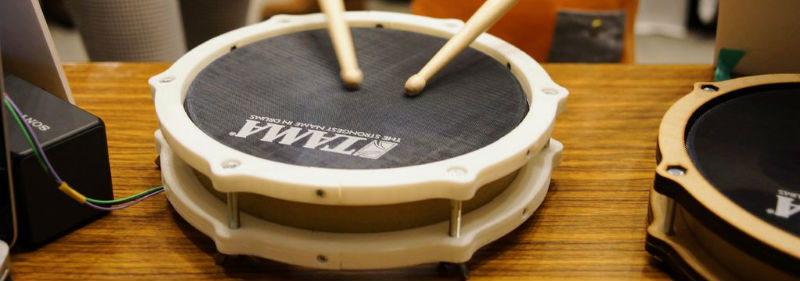The concept behind DIY electronic drum kits is fairly simple — small piezoelectric elements are used to generate a voltage when the drumpads are struck. That’s easy enough, but the mechanical design can be a difficult problem to approach. To solve that, [ryo.kosaka.10] decided to design an E-drum pad made with paper & 3D printed parts.
As far as E-drum triggers go, it follows the basic rules — a piezo element used as a trigger with some foam used for damping. For the striking surface, a Tama-brand mesh drum head is used. Being an off-the-shelf drum head, it has a good feel and playability. But the shell is where the creativity really shines through. While the top and bottom parts are 3D printed in the usual way, the main shell of the drum is made with several layers of thick paper laminated together with glue. This creates a surprisingly strong, sturdy shell and is also much faster and less wasteful than waiting for a similar part to 3D print.
To round out the guide, instructions are given on how to wire the piezo triggers up for either a regular E-drum sound module or an Arduino. It’s a nice touch, as those inexperienced with E-drums may not be entirely familiar with how they work – this way, anyone can give the project a try.
Keen for something bigger? Back in 2014 we saw this awesome 5-piece e-drum kit built out of buckets.
















My son plays drums and he has an interest in 3d printers. This seems like a natural. Thank you for posting this.
I worked in an electronics shop in the early ’90s and collaborated with the guys in the music shop opposite to turn cheap drum practice pads like these http://remo.com/products/product/practice-pad/ into drum trigger pads by simply inserting a piezo transducer inside them.